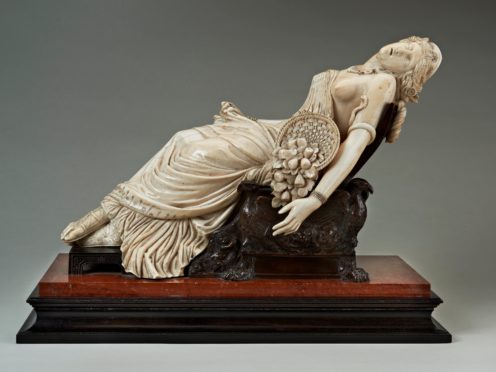A temporary export ban has been placed on a 19th century sculpture by artist Henri de Triqueti.
The ivory artwork, titled Death Of Cleopatra, is at risk of being sold overseas unless a UK buyer can be found.
It has been valued at £150,000, according to the Department for Digital, Culture, Media and Sport (DCMS).

Culture Minister Caroline Dinenage said: “Henri de Triqueti is an artist of national significance – his royal connections and influence on sculptors in Britain mean it would be a great shame to lost this exquisite sculpture abroad.
“Whilst UK museums and galleries are currently facing many challenges, I hope one can come forward and save this piece for the British public to enjoy.”
The decision on the export licence application for the sculpture has been deferred until March 17 in the hope that a domestic buyer can be found.
This can be extended until June 17 if there is a serious intention from someone to raise the funds to purchase it.
The decision follows advice from the Reviewing Committee on the Export of Works of Art and Objects Of Cultural Interest, which advises ministers on whether cultural artefacts that people wish to export are national treasures.
Committee member Stuart Lochhead said: “An important rediscovery, this striking sculpture by the ‘sculptor to the princes’ Henri de Triqueti is a tour de force of carving in ivory and casting in bronze.
“Its imagery draws richly on the antique world and superbly explores the emerging interest in polychrome sculpture in Britain at the time.
“The eclectic style of Triqueti was appreciated by Queen Victoria and Prince Albert alongside many significant collectors in mid to late 19th century Britain but today very little of his work is known publicly and it is too little studied.
“The emergence of this work adds considerably to our knowledge of his art in the UK and his influence on later British sculptors and therefore its loss to the nation would be keenly felt.”
